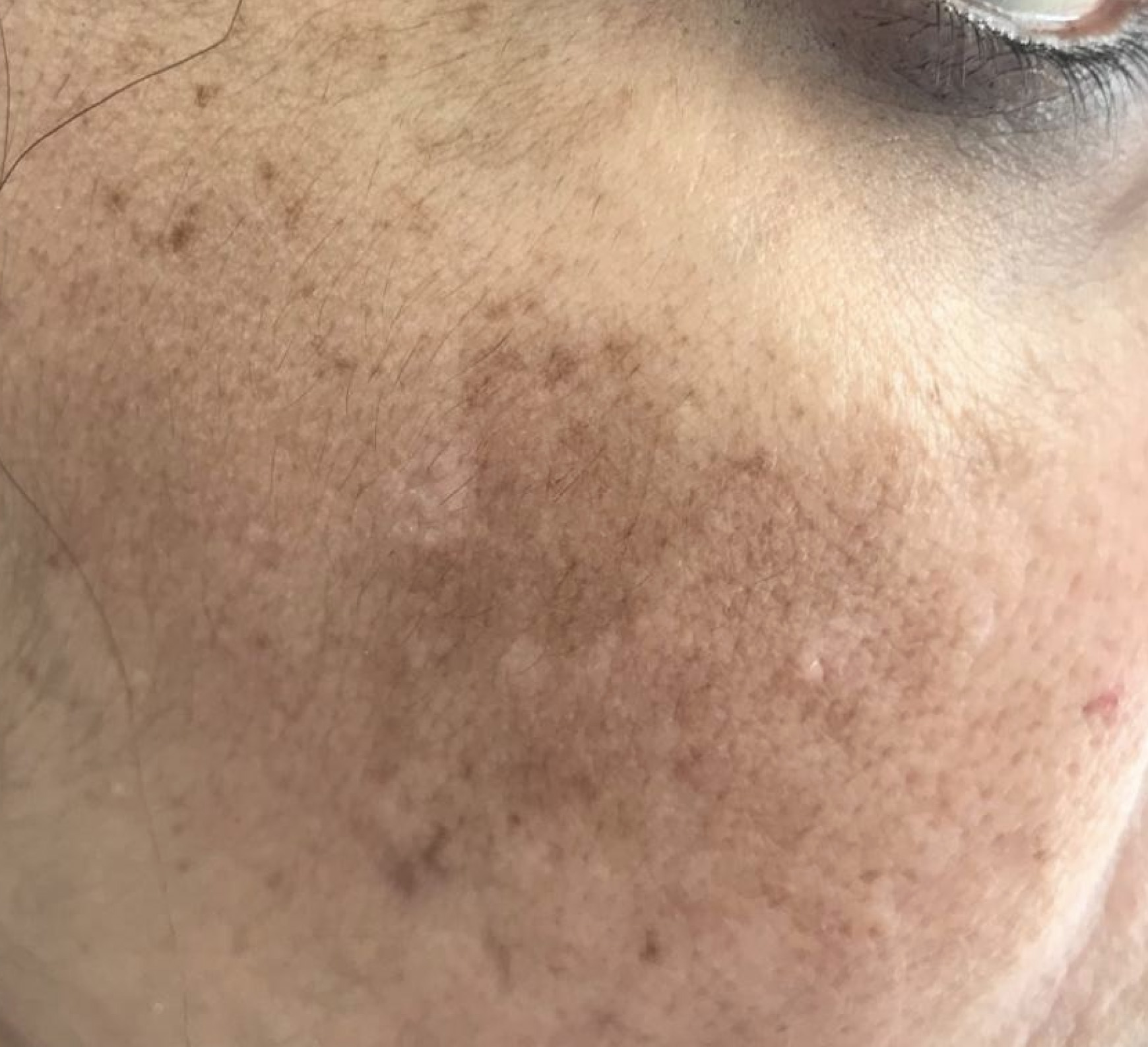Pigmentation can be stubborn and appear at any time. The causes are often discussed and assumed to be one thing or another. In my opinion they are normally multifactorial and will include one or several of the following.
Hormonal – causing melasma pigmentation from Pregnancy, Contraceptive pills or hormones, Polycystic Ovary Syndrome
Environmental – sun damage, lifestyle choices, lack of SPF, sunburn, causing sun spots.
Trauma – post scaring or skin peels without a pre treatment desensitization program, following skin irritation or disease healing and inflammation
When the skin is stimulated by these internal and external factors cells within the skin containing melanin are damaged. These cells are called melanocytes and when damaged they release melanin. In clusters melanin forms shadows on the skin which we see as pigmentation.
It is important to have pigmentation patches checked by a professional GP, aesthetic doctor or dermatologist. Pigmentation may not be dangerous but some patches will need careful evaluation on a regular basis. It is important to see the correct professional who can examine pigmentation properly. Beauty therapists are not trained or qualified to do this. They may make the problem worse or miss a pre cancerous mole or even a melanoma. Pigmentation is a complex condition.
Treatment options for pigmentation.
Treating with creams
There are many over the counter creams available, often there is no harm in trying these, but if you do please wear a sunscreen. Sun protection is vitally important when you are restoring health to your skin. If the over the counter creams do not work, your doctor or dermatologist can prescribe stronger topical skin creams. Other options are available including skin peels and laser treatments. RRS nutrimesotherapy can also decrease pigmentation.
Prescription creams offer a gradual skin health restoration taking 3 or more skin life cycles (each one is 6 weeks long). Creams often contain hydroquinone and retinol. There are non HQ pigmentation treatments, for example ZO Medical’s Retinol Skin Brighteners. It is important not to use certain pigmentation products for more than 5 months to prevent rebound hyper pigmentation from occurring. By pulsing the hydroquinone treatment in 5 month bursts (hopefully just one!) you will prevent further pigmentation complications.
Be careful, do not buy these creams online, some contain damaging ingredients and others contain too high a dose of hydroquinone concentration causing skin burns.
A 4 month Zo skin health restoration plan using the prescription only products will cost in the region of £700-800 depending on additional options including restoracalm for more reactive days. More information here.
Using biorevitalization nutri-mesotherapy
Nurti-mesotherapy involves multiple injections of light hyaluronic acid moisturizing serum containing bespoke ingredients to strengthen, hydrate, tighten and whiten your skin. Treatment is needed weekly for a 6 week period. Your skin is left fresh, rejuvenated and the pigmentation gets lighter with treatment. A course of 6 weekly treatments will cost in between £2000-3000 depending on the bespoke options selected for your particular skin type and concerns.
Chemical peels for pigmentation problems.
Skin peels use chemicals with ingredients such as glycolic acid, lactic acid, salicylic acid and TCA applied to the skin. This causes the top layer to shed and can be used to treat mild discoloration. Moderate and deeper peels should only be used after 4-6 weeks on a pre treatment program to avoid rebound hyper pigmentation and skin burns. These deeper peels can reach further into the skin structure and help to remove deeper pigmentation. It is essential to use a sun block with both skin care routines and after a skin peel.
Laser treatment
Lasers should only be used by trained specialists who are registered with the healthcare commission. The new laser treatments use a variety of laser energy on top of the skin and within the skin via small needles. It causes the darker skin to turn over more rapidly and therefore removes the pigmentation. After laser treatment your skin will be red like sunburn. After a day or two the top layer can weep and crust over. This is all part of the heeling process. No body ever said the achievement of beauty was painless.
